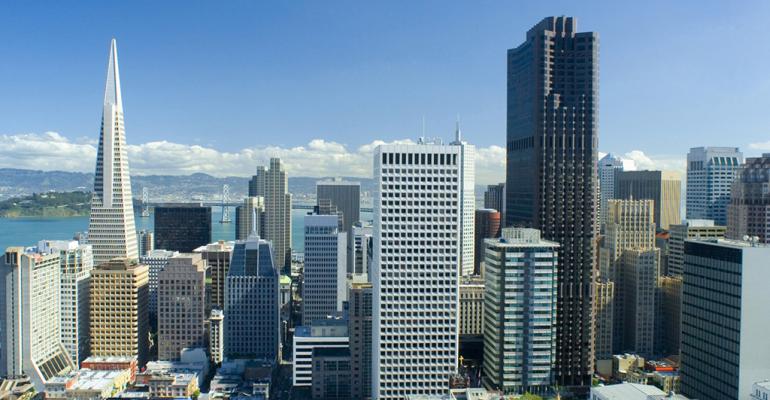Businesses are showing their confidence in the economy in early 2015, actively seeking growth and space expansion. Though national office fundamental growth crawled even slower in the first quarter than in previous months, it’s clear the industry’s reset button has been hit hard, experts say, and the next three years should beat records for quick rent growth and absorption.
After a number of positive growth quarters, the first three months of this year saw slight vacancy increases in several large downtowns, such as Chicago. National office leasing through the first quarter registered 12.7 percent below the same period in 2014, and vacancy remained flat, according to a recent Cushman & Wakefield report. However, rents are increasing and investors are still circling large markets, says Paula Munger, a managing director of research for the company. As there’s only 33 million sq. ft. of new space in the pipeline—about 1 percent of total inventory—demand is expected to firmly outweigh supply this year, she says.
“Though the bad East Coast weather had some impact on the market in the first quarter, we do anticipate leasing activity to accelerate even more this year,” Munger says.
Seemingly to dissuade investors from drawing too many conclusions from the first quarter stalled growth, Cushman & Wakefield also put out a rosy three-year forecast that claims this year and next will see a full return to pre-recession confidence levels.
According to the forecast, by the end of 2017, Cushman expects U.S. employment is expected to increase by almost eight million jobs, mirroring a recent Urban Land Institute three-year forecast that net job growth is expected to be 2.9 million people per year. Spending will also improve by 3.8 percent per year for the next three years, the fastest three years of growth since 1999-2001, according to the Cushman report. This demand is expected to increase the U.S. office rent average by 5 percent the next two years, and absorption should total 175 million sq. ft. by 2017, more than the past eight years combined, according to Cushman & Wakefield.
“It’s hardly pie in the sky; you have to really look at how we’re much slower in recovery than in past recessions,” Munger says. “But there’s every reason right now to believe healthy job growth is coming. Europe woes have tempered a bit, and fundamentals are good; barring a natural disaster, we think businesses will be looking for more space.”
Jeffrey Havsy, Americas chief economist for CBRE, agrees that the office growth has been “tortoise-like.” His firm’s recent first-quarter report shows the national office vacancy rate at 13.9 percent, almost flat from the fourth quarter. The rate is still the lowest since 2008, and Havsy agrees that corporate executives much more confident about expansion. According to the ULI report, a survey of 43 of the commercial real estate industry’s top economists and analysts, the national office vacancy average should drop to 13 percent by the end of the year, 12.5 percent next year and 12 percent by 2017.
“One quarter, this past quarter, doesn’t make a trend,” Havsy says. “While there was some slowdown in employment growth in some markets, we’re not concerned.”
Geographically, the urban markets still gain the most office attention, and the tech tenants are on everyone’s wish list. The top markets of New York City and San Francisco still dominate with vacancy below 10 percent, at 7.1 percent and 9.3 percent, respectively, according to the CBRE report. Other markets are below the threshold as well, with Austin recording 7.9 percent vacant in the first quarter, and Pittsburgh at 9.2 percent. There are some suburban markets near Dallas and Orlando that are growing thanks to easy access to amenities and dependable public transportation, and tech-heavy secondary markets such as Boston and Seattle are expected to shoot up in demand in the next two years.
Havsy says now may be the time for investors to look at markets that recovered too quickly following the recession, such as Washington, D.C., which may be primed for an upswing. “By the end of this year we should see continued improvement in the office sector,” he says. “The Fed has signaled that it is not going to raise rates as soon as previously thought, and supply is not a problem in most markets. You might even see more build-to-suits, as a lot of what’s available today doesn’t meet tenant needs.”

